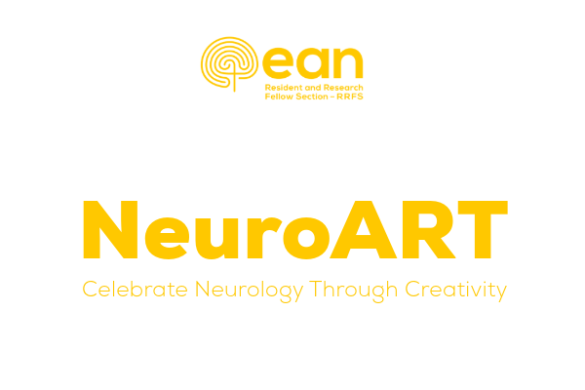by Martin Rakusa
Part 1: Does migraine with Brainstem Aura exist?
Migraine with brainstem aura (MBA) is a rare subtype of migraine with aura. Its pathophysiological mechanisms are still not understood, and proposed clinical criteria may not be specific enough to diagnose patients correctly. Some studies even suggest that aura does not originate from the brainstem but from the cortex. Diagnostic criteria and even the existence of the MBA is still a matter of debate.
Professor Jes Olsen opened the discussion with his lecture ‘Migraine with brain stem aura does exist’. In 1961 Bickerstaff introduced the term MBA. Today we know that a spasm of the basilary artery does not cause it. In order to prove that MBA does exist, professor Olsen and this team first reviewed the literature to identify convincing cases of MBA. They found 79 cases in the literature fully described as MBA, and 44 of them fulfil the ICDH-3 criteria. In addition, they modify the current criteria in accordance that the MBA is a rare disorder.
Then they searched for patients from the Danish Headache Centre database and found 4 MBA cases out of 293 patients (1.37 %). In the end, they interviewed an extensive sample of people with migraine with aura. In total, 16.3 % of patients had MBA. However, after a face-to face expert interview, this number dropped to only 2.2 % of patients.
In conclusion, the MBA is very rare among patients with migraine with aura (up to 2 %) and even rarer in the general population (approximately 0.04 %). However, it does exist, and more specific criteria are needed in the future.
His opponent was professor Anne Ducros. In her presentation, ‘Migraine with brain stem aura does not exist’, she agreed with professor Olsen that patients with brainstem symptoms aura exist. However, she and her colleagues disagreed that symptoms originate from the brainstem. Instead, they presented the hypothesis that symptoms originate from cortical spreading depression. Vertigo is the most common symptom in the MBA and affects up to 63 % of patients. However, vertigo was also described as the aura in patients with epilepsy. E.g. it can originate from the parietal cortex. Up to half of the patients with MBA have diplopia. Also, diplopia may occur due to a lesion in the brainstem, but it may also be a dysfunction of the primary or secondary visual cortex. Another common symptom is ataxia, which was also described in patients with insular stroke.
Dysarthria is described in 5 % to 63 % of patients with MBA. It may also appear after direct stimulation of precentral and postcentral gyri, parietal operculum and insula. Auditory symptoms such as tinnitus and hypacusis were also described in patients with epilepsy. Cortical dysfunction may also alter consciousness, which affects up to 25 % of patients with MBA.
Taken together, patients with the brainstem aura are real. However, their symptoms may originate from the cortex. This is also in accordance with the cortical spreading hypothesis.
Although her arguments seem firm, professor Olsen pointed to a few weak points. Patients have several different aura symptoms, which are too widespread to be explained with the cortical spreading depression. Neuroimaging has shown a decrease in blood flow in the territory of the basilary artery. In a few cases, a vertebra-basilar infarction was described as a complication of the MBA. Last but not least, studies on rats have demonstrated spreading depression in the brainstem.
During the discussion, a question was raised from the audience about how to distinguish MBA from the TIA. Professor Ducros explained that if someone works in the hospital and sees the patient after the first attack, it is not possible to distinguish MBA from the TIA. However, if the patient had two or more attacks and fulfils the diagnostic criteria, this may be possible. Professor Olsen pointed to the temporal component of symptoms. E.g. several different symptoms in the MBA come gradually, one after another, while the symptoms in the TIA come all at the same time. Professor Bronstein added that a single symptom could be a warning sign, e.g. insular stroke, especially if it repeats. Another warning could be that symptoms occur in older people without a history of headaches. After a lively discussion, all agree that further studies and more specific criteria are needed.
Part 2: Is it possible to diagnose NP with neurophysiological testing?
Pain is a subjective symptom and for many years doctors and researchers have tried to demonstrate it objectively. Classical neurophysiological tools such as nerve conduction studies and electromyography may not assess small neurons responsible for transmitting painful and thermal stimuli. However, there may be some neurophysiological tools with which we may objectively assess the neuropathic pain.
Professor Luis J. Garcia-Larrea presented arguments that it is possible to diagnose neuropathic pain with neurophysiological testing. To begin with, he reminded the audience of a different level of evidence of neuropathic pain published in 2016 in Pain.
Neuropathic pain may be possible, probable and definite. One of the criteria for definite neuropathic pain is to confirm a lesion with diagnostic tests. Among the different types of tests are clinical neurophysiological methods, which provide objective indicators for abnormal transmission in the somatosensory system. Garcia-Larrea also presented several cases where lesions seen on neuroimages affected the somatosensory system. However, patients did not have pain. In his lecture, he pointed out that quantitative sensory testing is not an objective method. In the next few minutes, he presented different techniques to assess small fibre neuropathy or lesions in the dorsal columns, spinothalamic tract or sensory cortex. One of the techniques is laser evoked potentials, which may detect a lesion in the somatosensory system despite normal neuroimages. Hyperalgesia and allodynia may be assessed with autonomic testing, e.g. pupillary reaction, heart rate or sympathetic skin response.
On the other hand, a normal result on neurophysiological tests may indicate that the patient is not suffering from neuropathic pain, even in the presence of the morphologic changes. This does not mean that the patient does not have pain, but the type of pain is not neuropathic. A primary limitation of the neurophysiological test in 2004 was the lack of diagnostic centres. However, since then, this has changed, and there are no more reasons not to use the neurophysiological approach more often, concluded professor Garcia-Larrea.
As his opponent, professor Jean-Pascal Lefaucheur presented contra arguments to diagnose neuropathic pain with neurophysiological testing. He also briefly touched on the diagnostic diagram and then presented several studies and case reports, where on the one hand, patients had visible lesions on the neuroimages and normal neurophysiological tests. On the other hand, they may be without pain and have positive results on neurophysiological testing. In addition, the density of intradermal small fibres correlates with the severity of neuropathy and not with the severity of neuropathic pain. Pathological results of laser evoked potentials may demonstrate impairment of the small fibres or spinothalamic tract, but they do not necessarily demonstrate neuropathic pain.
Moreover, altered results correlate only with the loss of function. Lesions to the small fibres produce thermoanalgesic loss, but this doesn’t correlate with pain. Neuropathic pain is a consequence of the hyperactivity of the remaining nerve fibres. In the end, he briefly touched on genetic testing and gain of function. Similar to previous tests, he concluded that they might demonstrate the lesion of the thermal or nociceptive pathways, but they do not demonstrate pain.
The first question during the discussion was a logical consequence of professor Lefaucheur’s lecture: “Should we change the diagnostic diagram for neuropathic pain if we may not diagnose it with clinical neurophysiological tests?” Professor Lefaucheur quickly answered”yes!” Immediately, professor Garcia-Larrea disagreed and explained that the current diagram results from ten years of work. We should also understand that neurophysiological tests should be used in patients who already have pain. Patients with pathological findings and without pain should not be considered. Professor Lefaucheur replied that there are also patients who have pain but negative results. At this point professor, Garcia-Larrea replied that those patients are extremely rare.
Another comment from the audience was that every test has its sensitivity and their role in diagnosing neuropathic pain is a supportive one. Some members of the audience were convinced that neurophysiological results might not demonstrate neuropathic pain in a single patient. At the same time they believe that neurophysiology is a powerful method for group comparisons. A colleague also noted some skin biopsy markers, e.g. GAP43 or peptidergic fibres, which may have a close association with pain in diabetic neuropathy. A helpful technique for the evaluation of sensory neuron excitability is threshold tracking. This could be relevant to attribute a personal risk for neuropathic pain.
As usual, there was not enough time to hear all the arguments for and against. We may hope that we will learn more on neuropathic pain in the future and provide more help to our patients.












